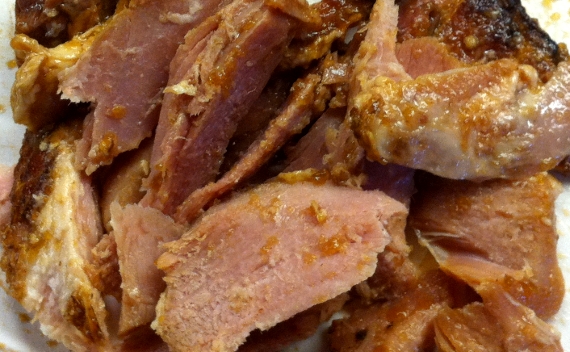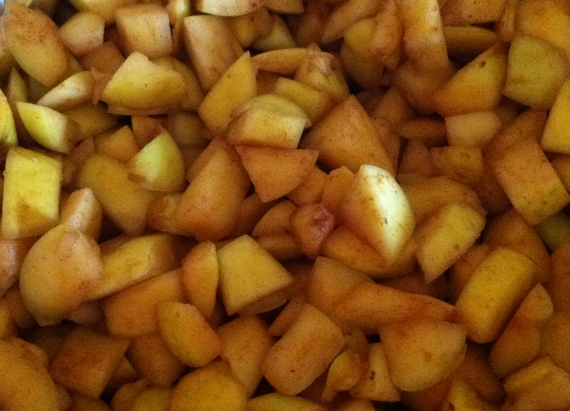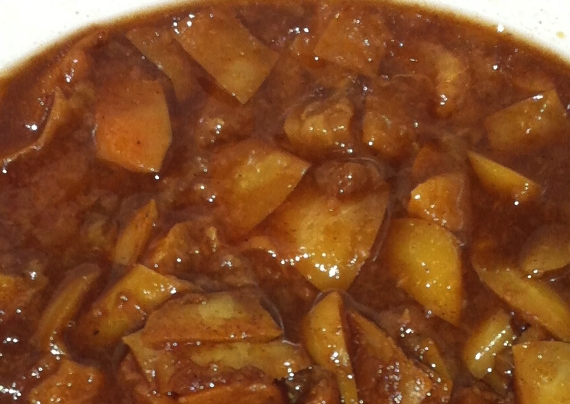
Gingerbread is one of my absolute types of cookies. Gingerbread cookies are perfect for the winter harvest and festival season, but sadly the winter season is over. Of course now that we are officially in spring, I am craving those warm homey spiced flavors, like gingerbread, pumpkin pie, chai and curry. At least gingersnaps, chai, and numerous curries are popular enough that they are available throughout the year. I really enjoy cooking with spices beyond salt and pepper. Spices, liven up dishes and make foods so much more interesting. As an added bonus, they also contain trace minerals, vitamins and anti-oxidants.
Spiced treats after holiday meals (and spices in your entrees) are actually quite helpful. The spices increase digestion for eating meat and other heavy foods as well as boost metabolism, which helps increase the burning of calories and body temperature, so it makes sense to me that gingerbread is a traditional winter holiday treat. In addition, ginger acts as an anti-inflammatory. I know it is strange to mention in an entry about cookies, but cinnamon regulates blood sugar, reduces LDL cholesterol levels and is anti-microbial (and therefore a natural preservative). Cinnamon also reduces arthritic and menstrual pain. Blackstrap molasses is high in iron, calcium and magnesium (with a serving size of two tablespoons dissolved in warm water) as well as significant amounts of manganese, potassium, vitamin B6, and selenium.
Gingerbread has historically been so popular, it is available in many different forms, textures and flavors from across the world. There are dry or moist cakes and hard and soft cookies, for instance, not to mention all of the other gingerbread flavored desserts. German lebkuchen are glazed flattened cookies, whereas the German Sankt Nikolaus spekulatius are very large cookies, which are made by pressing the dough into a highly detailed design (usually St. Nick or other religious shapes) cut into a large wooden cookie presses (really a cookie board). For the Dutch and Belgian versions (speculaas and speculoos) the cookies are pressed into wooden molds of all sorts of religious and secular shapes, even chickens and windmills. Pfeffernuesse are also German cookies but are made with peppercorns. For more gingerbread information and various cultures’ recipes, visit the St. Nicholas Center; they even have a gluten-free recipe for making speculoos. Check out Chef Petrus Hermanni Kurppa’s great collection of wooden cookie molds over on his blog, Turku Gingerbread.

Image Credit: Chef Petrus Hermanni Kurppa of Turku Gingerbread
Of course, you can always make crispy gingerbread cookies with a stiff dough by rolling it out thin, and then cutting the cookies into small shapes with either preformed cutters or cutting them into larger shapes by cutting the dough with a knife while following the outline drawn onto a piece of butcher or parchment paper. Making the pieces for constructing gingerbread houses (or lebkuchenhause) are also cut this way. Decorate with colorful frosting, sanding sugars and dragees to your heart’s content!
Candy Cane Gingerbread Cookies
These cookies are not specifically based on any one recipe but a couple from The Great American Cookie Cookbook.
Gluten-Free Gingerbread Cookie Dough
This cookie dough recipe is adapted from The Great American Cookie Cookbook’s Gingerbread Cookie Dough.
Yields 1 to 2 Dozen Cookies
Ingredients
1 T Chia Seeds, course ground
1/4 C Warm Filtered Water
1/4 C Unsweetened Apple Sauce or pureed pears
1/4 C Earth Balance Spread, softened
1/3 C Powdered Sucanat
1/4 C Unsulfured Blackstrap Molasses
1/2 tsp Vanilla Extract
1 1/2 C Gluten-Free All-Purpose Flour
1 tsp Xanthan Gum
1/2 tsp Baking Soda
1/4 tsp Baking Powder
1/2 tsp Sea Salt
1 tsp Ground Cinnamon
1/2 tsp Ground Ginger
Icing (see below)
Fruit Flavored Candy Canes, crushed
Directions
In a small bowl, beat the seeds and water together with a fork. Set aside for 15 to 20 minutes, stirring every five minutes or so to prevent the seeds from clumping.
Preheat oven to 350 degrees F. Line two baking sheets with silpats or parchment paper. Set aside.
In a large bowl, cream the apple sauce, spread, sucanat, molasses, “egg” and vanilla with an electric mixer until smooth.
In a medium bowl, combine the flour, gum, baking soda, baking powder, salt and spices. Add wet ingredients and mix until fully incorporated.
Spoon dough onto the baking sheets in one-tablespoon portions. Flatten slightly to spread the cookies to at least a two-inch diameter size. This dough is really sticky and difficult to work with, but try your best. Space the flattened cookies about inch apart.
Bake for eight to ten minutes or until the edges start browning. The cookies will harden as they cool, so do not worry if they are still soft. Cool the cookies for five minutes on the baking sheets. Transfer the cookies to wire racks to cool completely.
Once cool, drizzle or spoon the icing on the cookies. Immediately sprinkle the crushed candy on top and press larger pieces into the icing to ensure that it sticks. Let the icing dry for up to ten minutes.
Golden Apple Powered Sugar Icing
The Powdered Sugar Icing recipe is also from The Great American Cookie Cookbook’s.
Yields 2 1/4 Cup Icing
Ingredients
2 C Powdered Sugar
2 tsp Unfiltered Apple Juice
5 tsp Filtered Water
Yellow Food Coloring
Directions
Sift the sugar into a medium to large bowl to get rid of lumps. Mix the juice, water and sugar together with a fork.* Add more juice to increase flavor and thin the icing as necessary. Slowly stir in the yellow food coloring until you reach the medium shade of your choice.
*Increase the icing’s apple flavor by adjusting the ratio amounts of juice to water.





























